How to plant cucumbers in a greenhouse in July and is it possible to do this?
Traditionally, growing cucumbers indoors begins in spring or early summer. However, some gardeners prefer later plantings in order to have fresh vegetables at a time when most gardeners have harvested their crops long ago.
In this article we will tell you whether it is possible to plant cucumbers in a greenhouse in July and how to do it correctly.
When to plant cucumbers
Cucumber seeds are prepared at the end of May and planted in open ground from mid-June. In greenhouse conditions, seedlings are harvested from the end of April. The specific timing depends on the soil temperature. It should not be less than +15°C. Optimal values are +18…+26°C. If the soil is not warmed up enough, the growth rate of the crop will slow down, and in the worst case, the seedlings will die.
Heated greenhouses are almost independent of weather conditions - you can plant cucumbers in them all year round.
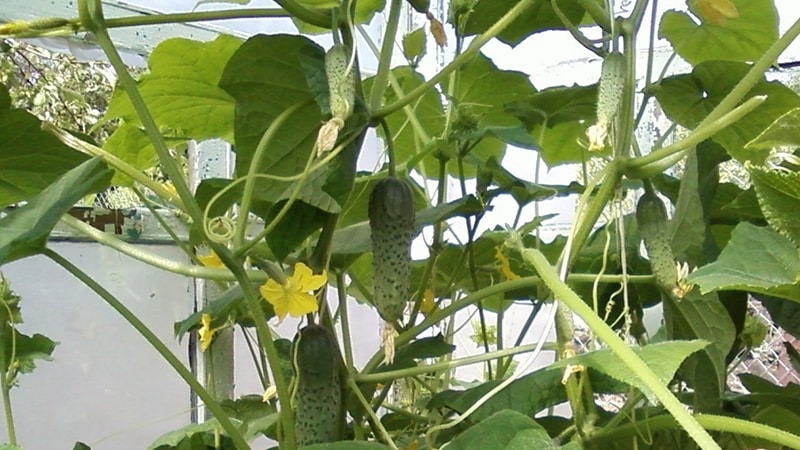
Is it possible to plant cucumbers in July and August?
Many farmers grow cucumbers in a greenhouse, planting seedlings in July and August. In order to please the harvest with quantity and quality, several features are taken into account:
- the greenhouse must be heated, since the peak of fruiting will occur in the cold season;
- varieties and hybrids are chosen early ripening;
- properly care for seedlings so that they are healthy;
- follow agricultural practices for growing cucumbers;
- whips are formed in a timely manner.
At night, the air temperature in the greenhouse should not fall below +10...+12°C. During the day, the optimal values are +23…+25°C.
Advantages and disadvantages
Greenhouse conditions make it possible to cultivate almost all types of vegetables, regardless of the time of year. Growing cucumbers indoors in summer has its pros and cons.
Advantages:
- at any time of the year the crop is protected from frost;
- the chance of early harvest is higher than in open ground;
- the fruiting period is extended;
- productivity increases up to several times a year;
- abundant fruiting with minimal financial costs.
Flaws:
- In closed spaces, special attention is paid to the prevention of various diseases: greenhouses provide favorable conditions for the proliferation of fungal microorganisms.
- To disinfect greenhouses, expensive and not always safe for health products are used.
There are many more positive aspects than negative ones, which is why many vegetable growers, including professional farmers, prefer to grow cucumbers in greenhouse conditions.
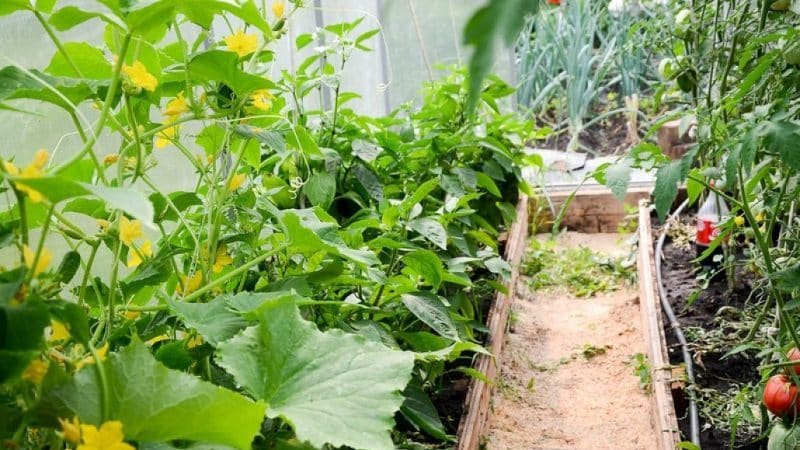
Which varieties are suitable
To grow cucumbers in the last months of summer, choose hybrids and varieties that will have time to produce a harvest before cold weather. Hybrids do not require pollination, withstand temperature changes and, with proper care, show high productivity.
Note! Future seedlings should be able to withstand shade well, easily tolerate short daylight hours, be easy to care for and have high growth rates.
Early ripening hybrids are well suited, which will delight you with a harvest in 40–45 days:
- Garland;
- Palekh;
- Emelya;
- April.
It is quite simple to distinguish first-generation hybrids from varieties: they are marked on the packages with the F1 mark.
What cucumber crops are best planted in a polycarbonate greenhouse? For such designs, early ripening parthenocarpic hybrids are suitable: Herman, Courage, Adam, Gunnar.
How to plant cucumbers in July
When growing cucumbers in a greenhouse in the summer, the characteristics of the vegetable crop are taken into account, the soil and seeds are prepared in advance and the seedlings are picked according to a certain pattern.
Soil preparation
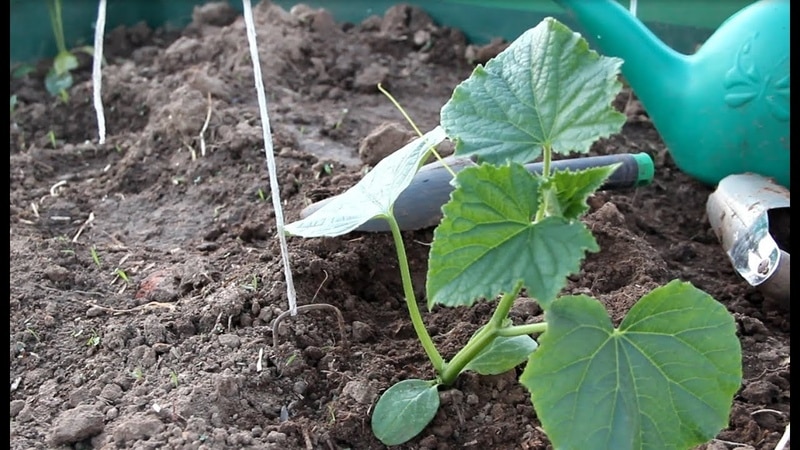
The soil should be highly fertile, well permeable to air and moisture. Humus, turf soil or peat are ideal for cucumber seedlings.
Some vegetable growers make their own soil by mixing:
- peat - 50%;
- humus - 30%;
- field soil - 20%.
Note! The pH level of the soil for cucumber seedlings should not exceed neutral; in extreme cases, weak acidity is possible.
Before planting seedlings, the soil is disinfected with a weak solution of potassium permanganate. Sometimes bark, rotted leaves, ammonium nitrate or potassium sulfate are added to it to increase yield.
Disinfection removes ammonia and gases from the soil, which negatively affect the growth of seedlings. To warm the soil, hot biofuel is used, 25–30 cm of fertile soil and a layer of ash are poured on top. Cover everything with plastic wrap for 2-3 days.
Seed preparation
After selecting the optimal variety, the seeds are pre-treated. First, they check for germination in a saline solution (take 10 g of salt per 1 cup of water). Seeds that float to the surface are removed: they either will not be able to sprout or will produce weak sprouts.
The specimens that have settled to the bottom are removed and disinfected in a solution of potassium permanganate for 30–40 minutes.
Next, the seeds are germinated. To do this, they are laid out on one piece of damp, warm gauze, and the other is covered on top. After about a week, when the first shoots appear, the sprouts are carefully planted in the greenhouse.
Planting seedlings
Cucumbers are planted both by seeds and seedlings.In the latter case, 2 grains are sown in cups with fertile soil. Seedlings regularly watered, avoiding overdrying the soil and excessive moisture. After emergence, the strongest sprout is selected and the weak ones are removed. A month later, the grown seedlings are planted in a greenhouse.
Planting methods and scheme
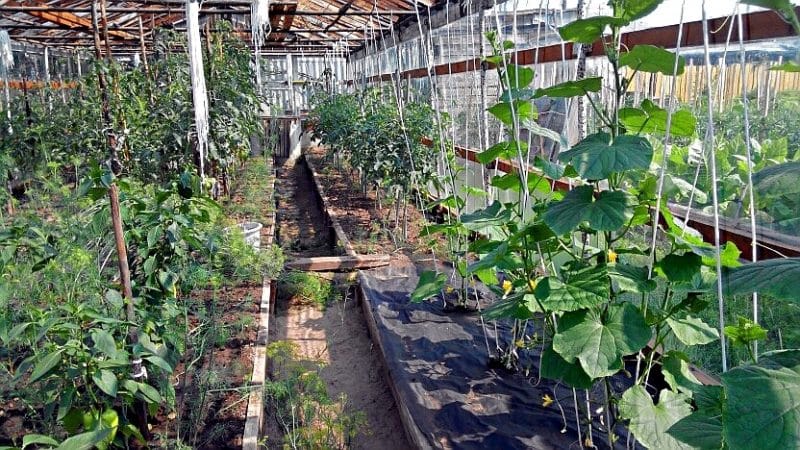
Sprouted seeds are planted in the soil no deeper than 2 cm, otherwise seedlings will appear late. Place 1-2 or at least 3 seeds in each hole. Subsequently, the strongest and healthiest plant is left. After planting the cucumbers, the soil is watered abundantly with warm, settled water.
At what distance in a greenhouse should I plant cucumbers? DFor seedlings, keep them 40–50 cm apart. If you reduce the distance, then as the plants grow, they will suffer from a lack of water, light and nutrition, and this will negatively affect the harvest.
Note! When picking seedlings, additional fertilizers are not added to the holes if the soil has been prepared in advance.
Seedlings are planted both in one row and in a checkerboard pattern. It is much more convenient to care for cucumbers when they grow in one row.
Caring for summer cucumbers
After emergence, vegetables especially need quality care.. Cucumbers need temperature, timely watering, and a sufficient amount of nutrients in the soil.
Water the crop every other day, and in hot weather daily. The optimal time is evening, but no later than 18 hours. The water is heated in the sun so as not to overcool the bushes. About 5 liters of liquid are used per plant. As the cucumbers grow, the volume is increased to 10 liters.
The bushes are fertilized for the first time when 3 leaves appear on them.
Note! Cotyledons are not considered full leaves.
At the very beginning of growth, cucumbers need nitrogen, so they are fed urea (1 tablespoon per 10 liters of water) or ammonium nitrate (2 tablespoons per 10 liters of water). Use 2 liters of solution per bush.
After the first feeding Cucumber shoots are fertilized in the flowering phase with urea or saltpeter. The proportions are the same.
Instead of chemical fertilizers, natural ones are used, for example, herbal infusion. To do this, dilute 1 liter of product with 9 liters of clean water, pour 2 liters per bush.
The third feeding is carried out during fruiting. Phosphorus and potassium are used, 2 tbsp. l. for 10 liters of water.
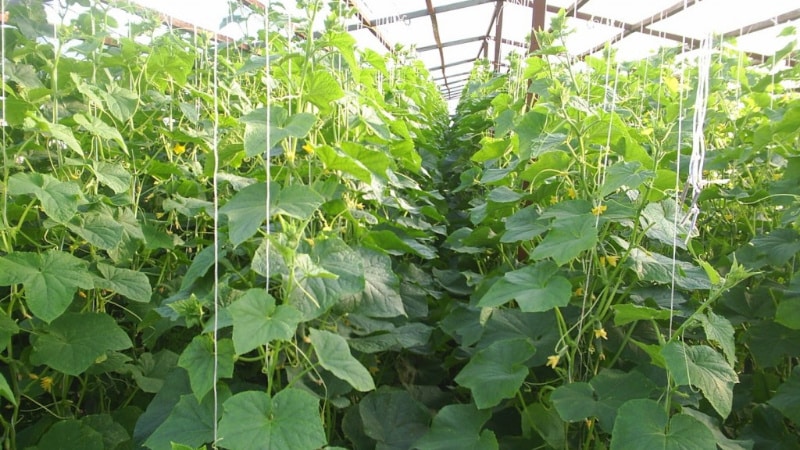
Summer cucumbers do not pinch. All small stepsons must be pruned, as they take away nutrients from the main stem.
The bushes are tied with twine, which is twisted in the shape of a figure eight and secured in the upper part of the greenhouse, and the lower part is not too tightly fixed to the plant. As they grow, the cucumber shoots are threaded through a figure-of-eight twine so that they grow upward.
Some vegetable growers tie shoots to bamboo sticks 2.5 m high. They are fixed in the ground before planting, and when the cucumbers sprout, they are attached to the sticks with plastic clips at a distance of 20–30 cm.
Conclusion
Cucumbers are capricious plants that are not easy to grow in summer. To get a rich harvest, it is important to observe the conditions for planting cucumbers in a greenhouse in August or July: monitor the soil and air temperature, properly prepare the soil, choose a suitable early ripening variety or hybrid, and treat the seeds.
Vegetables are fed 3-4 times per season, regularly fertilized, and tied up. With proper care, the crop will delight you with a harvest of juicy, crispy cucumbers already 50–55 days after germination.